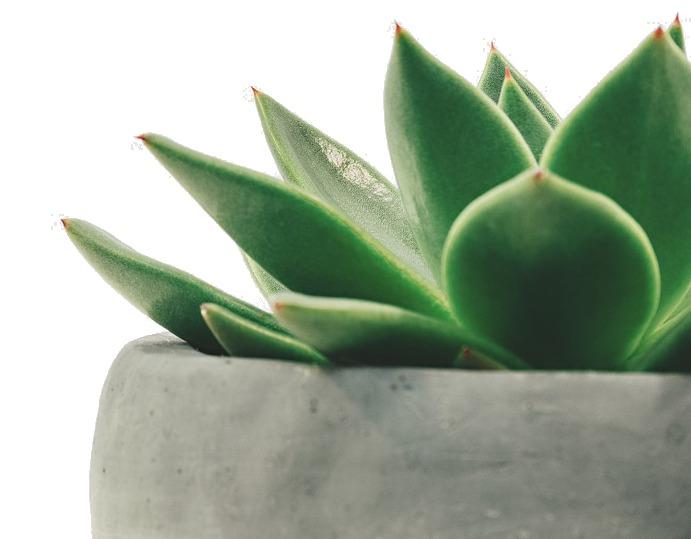
4 minute read
Bringing the Outdoors Inside
from DIGS 2024
by fernfriend


Bringing The Outdoors Inside
INTEGRATING ELEMENTS OF NATURE INTO HOME DESIGN CAN TRANSFORM LIVING SPACES INTO SERENE AND REJUVENATING ENVIRONMENTS.
By Jenn Goeddeke
The biophilic design fosters a deep connection between humans and the natural world, achieved by incorporating natural materials like wood and stone to add warmth and texture to interiors. Indoor plants not only enhance aesthetics but also improve air quality and well-being. Maximizing natural light through skylights and reflective materials can create a sense of openness and bring one closer to the outdoors. Even simple additions like pottery, earthenware ceramics, and terra cotta objects can give a space an organic, earthy feel.
To further enhance the connection between your indoor space and the natural world, consider cultivating a living wall. This can be achieved by arranging a variety of potted plants or creating a vertical garden, which not only adds a dynamic visual element but also improves air quality and mood. Incorporating earthy textures through textiles and accent pieces can also evoke the essence of nature; think cozy throws that mimic forest ground coverings or a jute rug that brings to mind sandy beaches. For a unique touch, a wicker pendant lamp or furniture with organic forms can introduce an outdoor feel.
Several indoor plants are well-suited for low-light conditions, making them perfect for spaces that lack abundant natural sunlight. Among these, the Lucky Bamboo (Dracaena sanderiana) is a resilient choice, often associated with good fortune in feng shui, and capable of growing in partial to full shade. Spider Plants (Chlorophytum comosum) are also highly adaptable and can survive with minimal light, their spiderette offshoots adding an interesting visual element to the space.
The Golden Pothos (Epipremnum aureum), with its heart-shaped leaves, is another low-maintenance plant that can thrive in dimly lit areas. For those seeking a touch of elegance, the Maidenhair Fern (Adiantum) offers delicate, fan-shaped leaves and prefers a consistently moist environment without direct sunlight. The Boston Fern (Nephrolepis exaltata) is another classic choice that enjoys low light and high humidity, while the Philodendron is known for its tolerance of dark interiors. These plants not only enhance the aesthetic of a room but also contribute to improved air quality and overall well-being by bringing a piece of nature indoors.
BEYOND PLANTS, INTEGRATING NATURAL ITEMS LIKE CRYSTALS, GEMS, DRIED BOTANICALS, PINECONES AND SEASHELLS can add an intriguing and lively aspect to your decor. These elements can serve as conversation starters and infuse your space with the diversity of the outdoors. In spaces where natural light is abundant, create airy nooks or sunrooms where one can lounge and follow the sun’s movements throughout the day, fostering a special connection with the outdoors.
Utilizing materials such as wood and stone in your furniture or architectural details can bring a tactile and visual aspect of nature indoors. A wood slab coffee table or slate stone countertops are not only stylish but also serve as a reminder of the natural world. When selecting colors for your home, opt for a palette inspired by the outdoors, with hues that reflect the sky, earth, and flora to transform the ambiance of a room. Artwork depicting natural scenes or elements can also be a window to the outside world, especially in urban settings where actual views might be limited. And don't forget the smaller, often overlooked spots in your home; even a small stone or a branch displayed thoughtfully can make a significant impact.
Finally, consider the scents of your home. Natural fragrances like pine, lavender, or eucalyptus can transport you to a forest or meadow and complete the sensory experience of bringing the outdoors in. By thoughtfully bringing nature indoors, one can create a home that not only looks beautiful but also promotes a healthier and more sustainable lifestyle.










